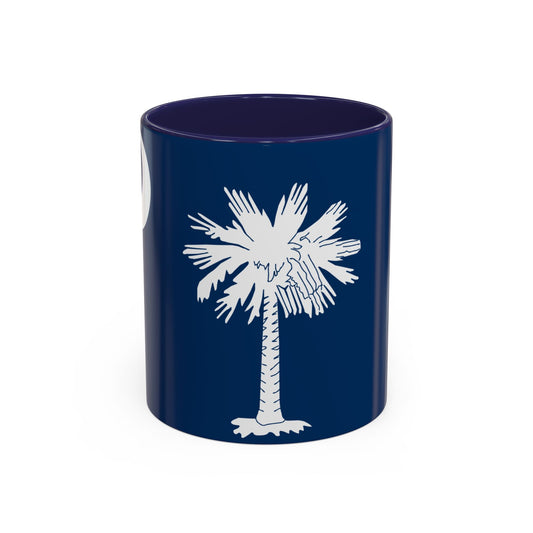-
South Carolina Backpack
Regular price $59.79 USDRegular priceUnit price / per -
South Carolina Mug
Regular price $11.65 USDRegular priceUnit price / per -
South Carolina Pillow
Regular price $22.65 USDRegular priceUnit price / per -
South Carolina Trucker Cap
Regular price $14.90 USDRegular priceUnit price / per -
South Carolina Leather Patch Hat
Regular price $18.85 USDRegular priceUnit price / per -
South Carolina Inspired Sweatshirt
Regular price $34.15 USDRegular priceUnit price / per -
South Carolina Flag Sweatshirt
Regular price $34.15 USDRegular priceUnit price / per -
South Carolina Sweatshirt
Regular price $34.15 USDRegular priceUnit price / per -
South Carolina Hoodies
Regular price $34.40 USDRegular priceUnit price / per -
South Carolina T-shirts
Regular price $22.79 USDRegular priceUnit price / per -
South Carolina Flag Hoodies
Regular price $34.40 USDRegular priceUnit price / per -
South Carolina Inspired Hoodie
Regular price $34.40 USDRegular priceUnit price / per -
South Carolina Inspired T-shirt
Regular price $22.79 USDRegular priceUnit price / per -
South Carolina Flag T-shirts
Regular price $22.79 USDRegular priceUnit price / per -
South Carolina Emblem Flag
Regular price From $37.40 USDRegular priceUnit price / per -
South Carolina State Flag – Polyester Printed Banner
Regular price From $39.84 USDRegular priceUnit price / per
Collection: US State: South Carolina SC flag
The South Carolina flag is a symbol of pride and heritage for the residents of the Palmetto State. Its design and colors hold significant meaning, reflecting the state's history and values. We will explore the interesting facts about the South Carolina flag that goes beyond what meets the eye.
About the South Carolina Flag

The flag of South Carolina is instantly recognizable by its rich blue field, accented with a stark white crescent and a palmetto tree centered proudly. This design captures the eye and holds within its elements a deep resonance with the state's storied past. The blue backdrop mirrors the uniforms of South Carolina’s soldiers during the Revolutionary War, symbolizing their courage and commitment to the cause of liberty.
The crescent, positioned in the canton, echoes the logo that adorned the caps of those very soldiers, a nod to their readiness and spirit of independence. The palmetto tree is central to the flag’s visual narrative, a living testament to the ingenious use of palmetto logs in fortifications that protected the state from British assault in a defining moment of resilience and strategic triumph. These symbols intertwine to create a banner that is both a historical document and a declaration of South Carolina’s enduring principles and pride.
Historical Context
The genesis of the South Carolina flag can be traced back to the tumultuous era leading up to and during the Civil War, specifically its formal adoption in 1861 as a symbol of the state's secession from the Union. This initial version was a precursor to the flag we recognize today, embodying the state's stand against federal authority and its assertion of independence and sovereignty. Over the years, the flag has undergone modifications that reflect South Carolina's evolving identity and historical milestones.
The palmetto tree, a later amendment to the original design, is a permanent reminder of the state's defense against the British at Fort Moultrie during the Revolutionary War, a pivotal event that predates the flag's creation by many decades. This adjustment enhanced the flag's visual appeal and deepened its historical significance, linking South Carolina's foundational moments of defiance and resilience across two different eras. These changes, while subtle, have solidified the flag’s status as a dynamic emblem of the state's rich heritage, encapsulating its journey from a colony fighting for freedom to a modern state proud of its indelible mark on the fabric of American history.
Symbolism
At the heart of the South Carolina flag's design lies a wealth of symbolism, each element carefully chosen to embody the state's core values and historical legacy. The vivid blue field of the flag is a direct homage to the uniforms South Carolina's soldiers wore during the Revolutionary War, a symbol of their steadfast courage and enduring spirit. This choice of color establishes a visual connection to the state's commitment to freedom and justice, principles that guided its actions during a pivotal time in American history.
The white crescent, placed prominently in the corner, is a tribute to the spirit of independence and vigilance. Its presence on the flag reflects the state's proactive stance in defending its liberties, echoing the crescents worn by the soldiers of South Carolina as a badge of honor and readiness. This feature reinforces the state's historic willingness to stand firm in adversity.
Dominating the flag's imagery is the palmetto tree, a powerful symbol of resilience and victory against overwhelming odds. Its roots in the flag's design trace back to the Battle of Fort Moultrie, where the palmetto logs used in the fort's construction absorbed and deflected British cannonballs, playing a crucial role in the American victory. The tree stands as a testament to the ingenuity and endurance of the people of South Carolina, encapsulating their ability to triumph in the most challenging circumstances. Together, these elements weave a narrative of strength, readiness, and unwavering resolve, capturing the essence of South Carolina's identity and the enduring spirit of its people.
Current Relevance
Today, the South Carolina flag is ubiquitous at state events, proudly flown at government buildings, schools, and public gatherings, symbolizing the state's rich history and the pride of its citizens. Its usage extends beyond ceremonial displays, often seen at national sporting events and military honors, where it represents the courage and resilience of South Carolinians, both past and present. Despite its widespread acceptance, the flag has not been immune to debate. In recent years, discussions have centered on its historical associations and the complexities of representing a state with a deeply intertwined legacy of independence and conflict.
These debates have sparked a broader conversation about how symbols from the past fit into the present-day social landscape, challenging individuals and communities to reflect on the flag's significance in a contemporary context. This ongoing dialogue underscores the dynamic nature of the South Carolina flag as a living symbol that continues to evolve alongside the state it represents, embodying its enduring legacy and future aspirations.
Additional Facts
The South Carolina flag is accorded its own set of dignified protocols to ensure it is shown the utmost respect. These guidelines dictate that the flag should be positioned below the U.S. flag when both are displayed together, upholding a tradition of national precedence. Additionally, careful attention is paid to ensure that the flag is never allowed to contact the ground, a practice common to flag etiquette that honors the symbol’s significance. A lesser-known yet fascinating anecdote about the South Carolina flag involves its resilience during historical turmoil.
Notably, the flag withstood the ravages of a significant fire in 1865, a testament to its enduring nature amidst the challenges of war and reconstruction. This event has become a part of the lore surrounding the flag, symbolizing not just the banner's physical durability but also the unyielding spirit of the state and its people. These additional details enrich the narrative of the South Carolina flag, highlighting its role not just as a state symbol but as a historical artifact that has witnessed and withstood the test of time.
































